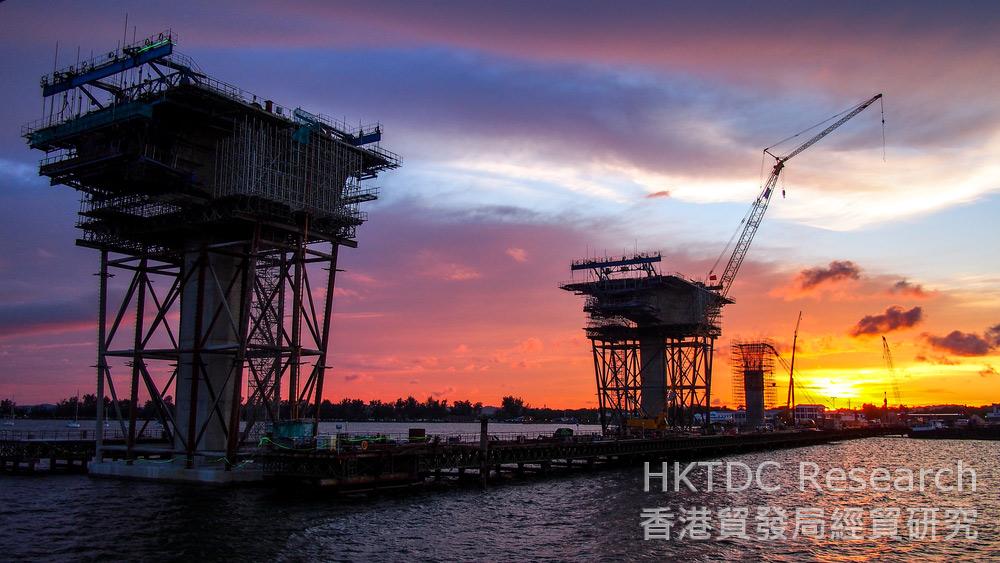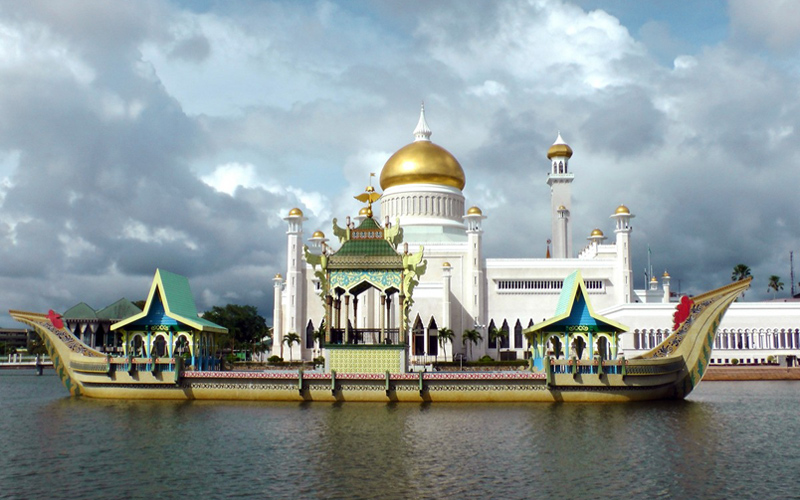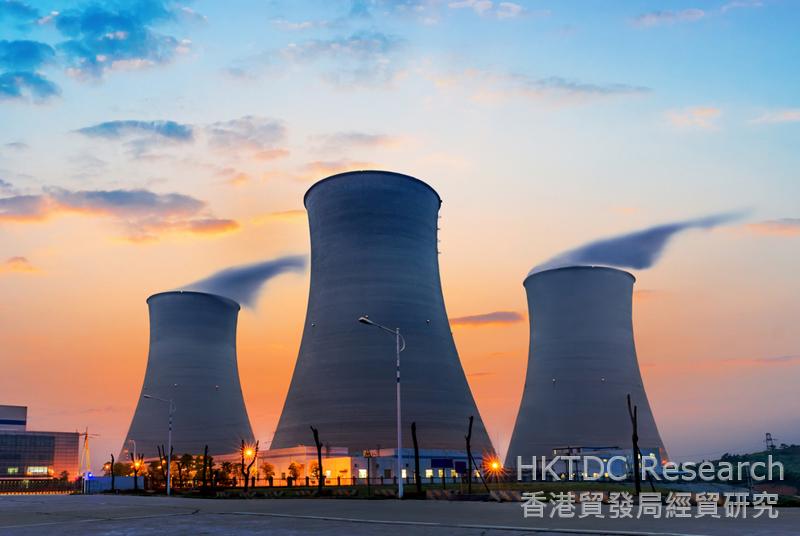Mainland China
Dezan Shira & Associates (DSA) is a pan-Asia, multi-disciplinary services firm that provides professional consultation in accounting, auditing, taxation, IT and human resource management to multinational corporations and foreign investors.
DSA aims to assist and guide companies through the establishment, maintenance and expansion of their business operations in Asia. Their clientele is spread across many Belt and Road countries and regions including Hong Kong, mainland China, India, Vietnam, Indonesia and Singapore.
DSA used to run their internal data applications through a common network and IPSec VPN. However, after they installed a new large-scale Microsoft ERP system, the shared internet access was not sufficient to support a sound operation, and they found themselves in urgent need of more data security.
HKT devised a comprehensive virtual private enterprise network and internet service for DSA, that provided a high-quality, stable and speedy network connecting other regions.
HKT set up private networks for DSA at several core offices in the Greater China region, allowing interconnection and interoperability at various sites. Each branch enjoyed completely exclusive bandwidth, while DSA’s key ERP system was protected with high levels of privacy and stability of data transmission via HKT’s Quality of Service (QoS) and Flow Control Technology (CoS).
Enabled by HKT’s one-stop solution, DSA has managed to improve the user experience of their internal data applications. DSA now uses HKT’s Premium Internet services for all their mainland-based offices to resolve the issue of connection failure when staff access information from other regions from their offices in the Greater China region. HKT’s services have been well received by DSA staff, as speed has more than doubled when loading websites of other regions and transmitting documents online.
For example, the average data transmission delay between its Beijing office and other branches has been reduced from 120 to 40 milliseconds, with the packet loss ratio dropping from the previous 10% to close to zero*.
With HKT’s support, DSA’s is expanding rapidly, and offering comprehensive foreign investment services for multinational companies looking to enter Belt and Road markets.
*Remarks: All test results were provided by DSA
Contact us:
http://www.hktchina.com/contact-us.php?lang=En



China Aircraft Leasing Group Holdings Ltd (CALC), an aircraft operating lessor founded in Hong Kong, specialises in providing aircraft full-life solutions, such as aircraft leasing, purchase and leaseback, structured financing to airlines around the world. It also provides value-added services including fleet planning, fleet upgrade and aircraft recycling. In a dynamic market that has been gaining traction year after year, CALC is one of the market players that stand to benefit from the boom. Today, the company has grown to become China’s largest independent aircraft operating lessor, Asia’s first large-scale aircraft recycling facility operator, and one of the top 10 global aircraft lessors in terms of the combined asset value of its fleet and orders placed. Its global presence is continuing to expand.
CALC’s business is mainly divided into two areas: CALC itself is responsible for the leasing of new aircraft; its member company, Aircraft Recycling International (ARI), focuses on the disassembling and recycling of used aircraft and spare parts supply. This unique business model means the company’s services cover an aircraft’s full life cycle – from its days as a new plane to the time it comes to the end of its lifespan. As the first full value-chain aircraft solutions provider in Asia, CALC currently owns and manages 130 aircraft in its fleet and is on track to expand its fleet to more than 300 by year 2023.
Over the past three decades, the aviation leasing industry has been growing at a remarkable speed as more and more airlines prefer to lease, rather than own, their aircraft for operation flexibility and efficiency. The outlook for the industry has become even more positive in recent years, with low interest rates and surging demand for air travel providing strong tailwinds. Amid the boom, CALC launched in 2014 a “globalisation strategy” aimed to carve out a global presence for the company. In less than two years, CALC’s clientele expanded to include airlines in Asia Pacific, Southeast Asia, Europe, Middle East and the United States, many of which are flag carriers or top-tier airlines in their markets.
The aircraft lessor first set its sights on Harbin, the pivot hub of the Longjiang Silk Road Economic Belt under the Belt and Road framework, which connects Eurasia with the Pacific and Baltic countries through a comprehensive land and sea transportation network. In 2014, CALC signed an agreement with the Harbin Municipal Government on the establishment of China’s first and largest aircraft disassembly project, the China Aircraft Disassembly Centre. The centre features an ageing aircraft material recycling system, which provides services to countries including those along the Belt and Road routes.
Also in 2014, CALC entered into leasing agreements with Air India – its first non-Chinese customer – for five new Airbus A320 aircraft. The first of the five planes was delivered during Indian Foreign Minister Sushma Swaraj's trip to China in February 2015.
As the “Aviation Silk Road” continued to gather momentum, CALC expanded its reach into more and more Belt and Road countries. In 2016, it delivered two new Airbus A320 aircraft to Pegasus Airlines, Turkey’s leading low-cost carrier, and four Airbus A320 aircraft to Jetstar Pacific, Vietnam’s first low-cost carrier. In 2017, CALC continued to deliver aircraft to airlines in various parts of the world, including in Russia, one of the largest markets on the Belt and Road.
Currently, aviation is one of the key areas of focus of the Belt and Road Initiative. As of the end of December 2016, China had signed bilateral air transportation agreements with 120 countries and regions. Mike Poon, Chief Executive Officer of CALC, said CALC sees great growth opportunities arising from the Belt and Road Initiative.
“In China, demand for domestic and international air transport services, including different aviation financial services, is growing rapidly. Meanwhile, many Belt and Road countries are emerging economies with an underdeveloped aviation sector. We believe our growth potential is high since we are the first-mover in the industry and one of the few operators that provide full value-chain aircraft solutions and value-added services to our clients around the world,” Poon said.
That is not to say there is no challenge. As with many other cross-border industries, the aircraft lessor sector is exposed to different operational risks, including political instability, credit risk and interconnectivity risk. To counter the risks, which are not unusual in Belt and Road countries, CALC relies on its own professional team with substantial experience in global financing and a comprehensive risk management system. This enables the company, which is listed on the Hong Kong Stock Exchange, to keep risks under control when expanding internationally.
According to Poon, in its continued effort to expand its international presence, CALC, being a Hong Kong company, also enjoys a diversity of advantages that the city offers. They include an open economy, the city’s sophisticated banking and financial sector, the common law system, and Hong Kong’s role as a facilitator of Belt and Road opportunities. In addition, the Hong Kong government’s move last year to grant aircraft leasing tax concessions to qualifying lessors has taken the city a step towards establishing itself as an international aircraft leasing hub. All these local advantages stand CALC in good stead, enabling it to grow fast and in the right direction while playing an effective role in building the “Aviation Silk Road”.



Hong Kong-based Outblaze aims to pioneer a path on the Belt and Road Initiative with its digital entertainment and educational media, covering areas such as movies and games. Founder Yat Siu says Hong Kong is strategically situated for diverse cultural exchange while Outblaze’s location in a smart space centre at Hong Kong’s Cyberport is valuable for its dynamic, innovative community.
Speaker:
Yat Siu, Founder, CEO, Outblaze
Related Links:
Hong Kong Trade Development Council
http://www.hktdc.com
HKTDC Belt and Road Portal
http://beltandroad.hktdc.com/en/



Zai Lab is a high-tech biopharmaceutical company headquartered in Shanghai that specialises in transformative medicines. With its expertise and experience in innovative medical research and development (R&D), Zai Lab partners with the world’s top multinational companies and institutions to carry out joint research and product development. For Zai Lab, global data transmission and internet accessibility are vital to its daily operation.
HKT provides ICT solutions to a number of the world’s top 500 companies and many established pharmaceutical enterprises. HKT’s project team possesses extensive experience to offer customised solutions to Zai Lab – using multiprotocol label switching (MPLS) to create virtual private networks (VPN).
HKT’s experienced advisory service team understood the project objectives and was able to tackle issues encountered during implementation. The project team coordinated across various departments in Zai Lab and was able to complete the project ahead of schedule.
HKT’s MPLS VPN solution to Zai Lab has improved the company’s internet accessibility significantly. Zai Lab’s staff can now access information from overseas websites more easily and data transmission has become faster, more stable and more secure.
Going forward, leveraging the expertise of HKT, Zai Lab plans to expand its business worldwide to capitalise on the opportunities presented by the Belt and Road Initiative.
Contact us:
http://www.hktchina.com/contact-us.php?lang=En



Hong Kong digital transcription service Scribe Intelligence sees huge opportunities in artificial intelligence under the Belt and Road Initiative. Founder Christopher Choi aspires to dominate the transcription business in Asia – thanks to help from Hong Kong startup incubator, Zeroth.AI. It’s a programme that provides initial investment, help in finding additional financing as well as extensive advice and support, says Zeroth.AI’s Tak Lo.
Speakers:
Tak Lo, Managing Partner, Zeroth.AI
Christopher Choi, Founder, Scribe Intelligence
Sherman Lee, Partner, Zeroth.AI
Related Links:
Hong Kong Trade Development Council
http://www.hktdc.com
HKTDC Belt and Road Portal
http://beltandroad.hktdc.com/en/



A Hong Kong company billed as Asia’s first Artificial Intelligence (AI) incubator is making waves in the global start-up scene. Zeroth.AI runs an early stage funding programme for various start-up sectors including physical fitness. Managing Partner Tak Lo says he would like to see Hong Kong generated AI solutions tackle health issues in Belt and Road Initiative countries, where healthcare infrastructure may be lacking.
Speakers:
Tak Lo, Managing Partner, Zeroth.AI
Keith Ramjan, CEO, fitoneum.com
Related Links:
Hong Kong Trade Development Council
http://www.hktdc.com
HKTDC Belt and Road Portal
http://beltandroad.hktdc.com/en/



US$15 billion China-invested refinery and petrochemical complex seen as having essential part to play as Brunei looks to reinvent itself in the face of stubbornly-stalled international oil prices and its own rapidly-dwindling gas and oil reserves.
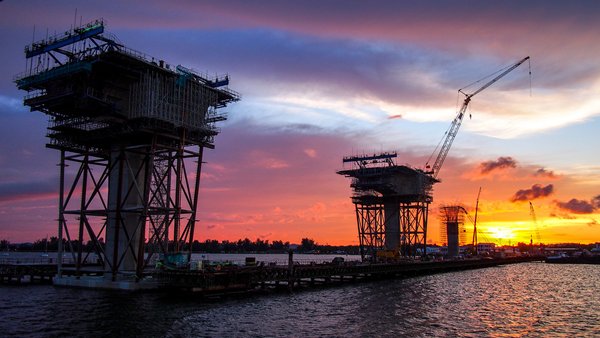
The news that work on a 2.7km bridge connecting Bandar Seri Begawan, the Brunei capital, with the neighbouring island of Pulau Muara Besar (PMB) had been completed late last month marked the successful conclusion of the country's first Belt and Road Initiative (BRI) project. It is, however, only one small element of the far wider-reaching China-backed development that will transform the island into one of the region's primary refining and petrochemical hubs.
Once completed, the US$15 billion refinery and petrochemical complex is expected to provide up to 10,000 jobs and play a crucial role in weaning the Brunei economy off its traditional dependence on its crude oil and natural gas exports. Although work on the bridge was led by the China Harbour Engineering Company, a Beijing-headquartered subsidiary of the huge China Communications Construction civil engineering conglomerate, the construction of the plant proper is down to the Hangzhou-based Zhejiang Hengyi Group (Hengyi). Under the terms of its agreement with the Brunei government, the company, one of China's largest suppliers of raw materials for the textile industry, funded the $3.4 billion facility and will be responsible for its day-to-day operations once it comes online late next year.
Another Chinese company, Lanzhou LS Heavy Equipment, a specialist in the provision of petrochemical systems, meanwhile, has been contracted to build a number of the refinery's key production units. These include an aromatics facility with a capacity of 1.5 million tonnes per annum and a 2.2 million TPY (throughput yield) hydrocracking unit.
Overall, the refinery is shaping up to be both China's largest, privately-owned facility outside the mainland and, by far, the most expensive overseas-backed project in Brunei's history. Once operational, it will have the capacity to process 160,000 barrels a day, while also providing feedstock for Hengyi's terephthalic acid production, an intermediate material required to make polyester. It is also hoped that, in time, it will produce a sufficient level of fuel to allow Brunei to successfully compete with Singapore, currently the dominant regional oil hub.
Back in March, in order to finance the project, Hengyi Petrochemicals became the first company to issue BRI corporate bonds – a financial instrument newly approved by the China Securities Regulatory Commission – and successfully raised US$79 million on the Shenzhen Stock Exchange. It is money that the company is clearly going to need.
Earlier this year, it was announced that the second phase of the PMB project will cost some $12 billion. This will see the refinery's capacity expanded to 280,000 barrels a day and will also fund units capable of producing an annual TPY of 1.5 million tonnes of ethylene and two million tonnes of paraxylene.
The scale of the project is a sure indication of its importance to Brunei. Although the country is the second-richest per capita in the ASEAN bloc, after Singapore, low oil prices have seen its economy contract significantly over recent years, while also driving up the level of unemployment. Although, after four years of contraction, the country's economy rallied slightly last year with its GDP growth estimated at 1%, it is still being far outstripped by many of its fellow ASEAN states.
As well as the currently stalled oil prices, the country's oil and gas reverses – long its economic lifeline – are expected to be exhausted within 20 years. In anticipation of this, many of the global petrochemical companies have already cancelled plans for further investment in the country.
The PMB facility, then, is therefore clearly a key initiative and will help the country maximise profits from its dwindling reserves. At the same time, it will also nurture the capability and expertise required to service the increasing number of oil and gas fields coming online across the wider region.
Some institutions, however, are not hanging around to see if Brunei can successfully reboot its economy. Back in 2014, Citibank shuttered its branches and pulled out after 41 years in the country. A year later, HSBC followed its example, again ending its ties to the country. Widely seen at the time as swimming against the tide, the Bank of China opened its first Brunei branch in 2016. Given recent events and current forecasts, that might not have been quite the reckless move it seemed at the time.
According to the International Monetary Fund's recently published Regional Economic Outlook for Asia and the Pacific, the country's economy may expand by up to 8% in 2019, maintaining average growth of 5% for several years thereafter. Significantly, one of the cited reasons for this likely resumed growth was the imminent completion of the PMB facility.
While climbing aboard the BRI bandwagon is clearly in Brunei's interest as the country seeks to reinvent itself in economic terms, Beijing's interest in its 3,900km distant trading partner is far from altruistic. Back in 2014, the two countries pledged to work together on the development of the Brunei-Guangxi Economic Corridor (BGEC) as a means of developing mutual trade, particularly with regard to halal products, tourism and shipping. Over recent years, the BGEC has been subsumed into the overall BRI project.
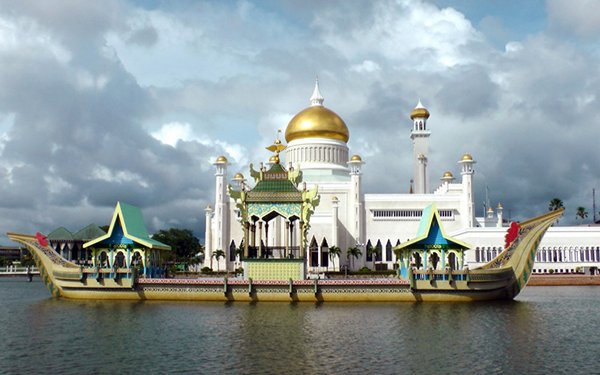
In terms of its BRI significance, Brunei also has the benefit of being set at the very heart of the Brunei-Indonesia-Malaysia-Philippines East-Asian Growth Area (BIMP-EAGA). Given the surging prosperity of this region, the BRI may allow Brunei to resume its classic role as a preeminent trading hub, boosting China's hopes of facilitating international trade to a scale never before seen.
More prosaically, China and Brunei have both staked a claim to the 370km-long Louisa Reef, one of the disputed areas of the South China Sea. It is now hoped that the close co-operation the two countries currently enjoy will allow them to jointly explore the reef's potential economic benefits, rather than remaining a continuing source of tension between the two.
Marilyn Balcita, Special Correspondent, Bandar Seri Begawan
Editor's picks
Trending articles
As well as boosting Pakistan's power generation, deal establishes China as key nuclear technology exporter.
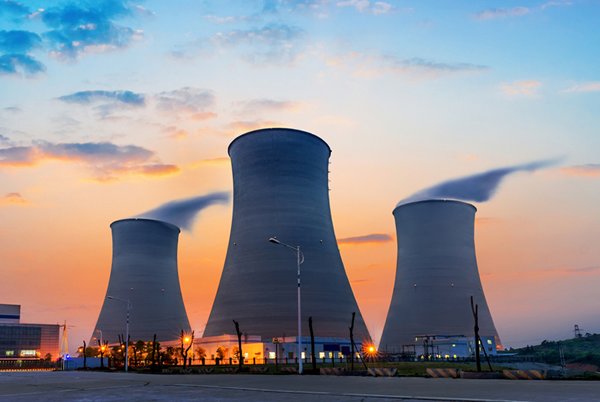
In perhaps one of the more politically sensitive Belt and Road Initiative (BRI) developments, last month saw China and Pakistan agree terms on the installation of an 878-km power transmission line. Once in place, this will link Lahore with southeastern Matiari, a hub city for the electricity generated in many of the China-backed power plants already operational within the China-Pakistan Economic Corridor, the massive infrastructure redevelopment and energy generation programme at the heart of Pakistan's bid to address its acute logistical problems and its vast power undersupply, as well as the BRI, China's own hugely-ambitious infrastructure and trade facilitation programme.
While – aside from a few environmental concerns and suggestions that China's largesse represents a form of financial colonisation – the developments have largely found approval within Pakistan, they have become something a flashpoint with neighbouring India. The relationship between the two countries has long been fraught, with distrust and recriminations dating back to well before 1947, when they emerged as independent states amid the gradual dismantling of the British Empire.
Now, in addition to several territorial issues, India – one of the few major economies not to embrace the benefits of the BRI – is known to be unhappy that China is effectively wooing a number of countries, such as Pakistan and Nepal, that it sees as rightly within its own sphere of influence. Perhaps most gallingly, China is seen as helping Pakistan further develop its nuclear-power sector, a hugely sensitive issue given the long-term nuclear-weapons standoff between the two South Asian countries.
While this latest development does not relate to Pakistan's rapidly expanding nuclear-power sector, with the electricity set to be transmitted via the new power transmission line actually sourced from several China-backed, coal-fired facilities in the west of the country, that is not to say that China's isn't heavily committed to helping Pakistan boost its nuclear-power generation capacity. Indeed, much of the basis of the present and continuing China-Pakistan economic co-operation revolves around power generation – both conventional and nuclear – as the Pakistan government looks to solve its longstanding energy-generation shortfall.
As recently as 2013, with the country's demand topping 15,000 MW, Pakistan only had a total generational capacity of 11,000 MW. With the gap between demand and supply only set to grow, the country has since set about accelerating the expansion of its nuclear-power programme, with China acting as financial backer, technical consultant and lead contractor. Ultimately, it is hoped that this tactical alliance between the two countries will result in Pakistan having a domestic power generation capacity of 40,000 MW by 2050.
That is not to say that China sponsored Pakistan's introduction into the still relatively small number of nations with nuclear-power facilities. Predating China's initial involvement by more than 20 years, 1971 saw Toronto-headquartered GE Canada install and then manage KANUPP1, the Karachi-based facility that produced Pakistan's first nuclear-derived electricity. Although Canada cut all ties to the plant in 1976 after Pakistan refused to sign the Non-Proliferation of Nuclear Weapons Treaty, the plant continued in service until 2002. Following a four-year upgrade, it resumed operation and continues to produce electricity, albeit at a reduced level.
China's involvement with the country's nuclear programme began in August 1993, when the two countries jointly developed the Chashma Nuclear Power Complex in Punjab, Pakistan's most populous province. Marking the first time China had exported its nuclear technology, the installation initially comprised two 300 MW generating units and two subsequent 340 MW units, all of which are now connected to the national grid.
In 2013, China and Pakistan agreed to add a fifth unit to the Chashma facility, which is due to go online in 2020. That same year, construction also began on two state-of-the-art 1,000 MW+ reactors – KANUPP-2 (K-2) and KANUPP-3 (K-3) – close to the original reactor site, with both due to be operational by 2021. Acting under the auspices of the International Atomic Agency, the sector's global regulator, three of the mainland's leading nuclear-power companies – the China General Nuclear Power Group, the China National Nuclear Corporation (CNNC) and the China Atomic Energy Authority – co-operated in the development of the two new facilities, with CNNC covering at least US$6.5 billion of the costs of the $10 billion project through a series of low-cost loans.
At the core of the two new facilities is the third generation HPR1000 Hualong One reactor, the model at the forefront of China's bid to export its nuclear technology. One such model is currently undergoing acceptance tests in the UK, while another has been earmarked as the centrepiece for Argentina's fifth nuclear facility with work on the project scheduled to begin in 2020. In the meantime, as well as helping Pakistan meet the shortfall in its electricity supply, while tying the country into wider goals of the BRI, the Punjab nuclear facility is also acting as China's calling card as it looks to establish itself as a world leader in safe and cost-effective nuclear-power generation.
Geoff de Freitas, Special Correspondent, Lahore
Editor's picks
Trending articles
By Deloitte
China-proposed Belt and Road Initiative (BRI), which has been a large part of the investment landscape across a swathe of the world for four years, will become increasingly important. This paper summarises Deloitte’s key BRI insights for 2018, and also explains how industry players can best position themselves to seize the ever-widening range of BRI investment opportunities...
Winners and global resonance
BRI 2.0
In May 2017 at the BRI Forum in Beijing, President Xi told attendees that the vision underpinning BRI “is becoming a reality and bearing rich fruit,” adding that “a solid first step has been taken.”
Naturally some regions and industries have done better than others. Southeast Asia and South Asia remain key beneficiaries and, our research shows, remain the most favored by SOEs (figure 9). For the former, that is partly due to proximity to China and a higher state of development, and partly due to the demand for better infrastructure. For the latter, the size of their populations and vast market potential are important draw cards.
Europe is also popular, as are Russia and Central Asia. We expect that will remain the case over the coming years, although given that BRI’s sustainability is aligned with China’s economic and political interests, it is likely that the initiative’s priority will continue to be areas that are geographically close to China.
We saw earlier why infrastructure attracted more funding than other sectors, with China’s SOEs the key winners. As BRI’s global ecosystem builds, it will encompass investments in manufacturing and trade, as well as softer investments in tourism and culture. That will create opportunities for MNCs with the technology, skills and connections that Chinese firms, whether SOEs or POEs, often lack.
In addition, we expect increasing numbers of Chinese POEs, many of which view BRI as a venue for SOEs, will become more active in areas such as M&A, which is what Beijing wants. Although some POEs are cautious, others have committed.
Bigger pool of opportunity
This goes to the heart of BRI’s phase 2, which is widening the pool of opportunity. And although many MNCs have yet to reap benefits, some have. Take ABB, for example. The Swiss-based firm has been involved in dozens of EPC deals undertaken by Chinese companies, for which it aims to become “the partner of choice.” In 2016 alone, it helped 400 Chinese firms to resolve inter-country differences in design and industrial standards.
Caterpillar says it regards BRI as a long-term opportunity. For its part, GE recorded orders worth $2.3 billion in 2016, most under BRI projects, up from just $400 million in 2014; over the next year or so, GE will bid for business worth another $7 billion of business. Honeywell and Siemens have also benefited from their technological offerings, while Citibank and Zurich are among others getting more deeply involved.
We believe phase 2 will bring greater global resonance, and that MNCs that position themselves strategically now stand a good chance of benefiting.
Phase 2 is being driven by the ready funding provided by China―and increasingly by others. In May 2017, President Xi announced a further $124 billion for BRI, including $14.5 billion for the Silk Road Fund, and special lending schemes for the China Development Bank and the Export-Import Bank of China, worth around $36 billion and $19 billion, respectively. He also called on financial bodies to establish a BRI fund worth $43 billion.
The involvement of the Asian Infrastructure Investment Bank (AIIB)―which is expanding its influence and in June welcomed its 80th member―in BRI projects will prove increasingly important. As it builds credibility and experience, and enjoys the backing of China and dozens of other governments, it should have little trouble raising funds on global capital markets. This internationalisation of the AIIB should also increase the sensitivity of sponsoring governments, not least China, to perceptions of political influence in BRI.
In short, BRI is benefiting from initiatives that have increased the amount of financing, its sourcing (including from developed nations such as the United Kingdom and Germany) as well as the cofunding of projects between, say, the AIIB and other multilateral organisations.
MNC Opportunities
Not only has MNCs’ opportunity to get involved in BRI never been better, it is likely to keep improving. Why? Not least because Beijing wants to boost BRI’s inclusiveness. China’s leaders describe BRI as an initiative, not a strategy. While that might seem a low-value distinction, it informs an important difference: It means Beijing views BRI as a global program that was initiated by China, and not as a Chinese project.
China stands by its assertion that BRI is for all, and needs to show it means that by keeping BRI open. That will not hold up if MNCs can participate in only a showcase fashion.
Phase 2’s very nature will also afford MNCs greater opportunity, because many enjoy competitive advantages over Chinese firms in areas such as manufacturing, trading and tourism.
There are other pointers too. Firstly, more funding will come from outside China, including from monetary financial institutions (MFIs) such as the World Bank and the ADB; this will bring with it increased transparency as well as rules with which MNCs are more familiar.
Secondly, the AIIB recently brought its decision making more in line with that of the World Bank and the ADB, and said it would take account of issues such as the environment; this should have a similar effect given that MNCs have more experience in meeting such requirements.
And thirdly, richer countries are benefiting from BRI, and are better able to ensure that projects are of the highest standard, and that the companies carrying out such work are the best available. Again, that ought to benefit non-Chinese MNCs...
Conclusion: Three key insights and predictions
Our experience with BRI projects over the years has allowed us to develop three key insights and predictions, all of which have appeared in this report in some form.
Firstly, BRI is much more than a Chinese-funded infrastructure project. And although SOEs have undertaken the bulk of BRI projects to date, we expect many more POEs and MNCs will become involved in the near future. Linked to this, many projects are underpinned by strong bilateral relationships between China and the countries concerned, which makes these investments more secure than outsiders might imagine. And while most participants are developing countries, it is also true that developed nations are increasingly involved.
Secondly, BRI’s opportunities will become increasingly plentiful, but a longer timeframe is needed when measuring returns―10–15 years rather than 3–5. And although many projects involve higher risks than conventional investments, it is important to keep those risks in perspective and deal with them dynamically.
Thirdly, BRI is a collaborative ecosystem that to date has focused on energy and infrastructure, but that over the next five years and beyond will evolve to concentrate on trade, manufacturing, the Internet, tourism and other aspects.
It is worth saying, too, that Beijing’s view of BRI is not well understood abroad: It sees this initiative as comprising a different interpretation of globalisation, one that is about optimising returns, not about maximising them in solely financial or commercial terms. This is encapsulated in the principle underpinning BRI: 共商共建共享, which translates as, “Trade together, build together, enjoy together.”
And so, while BRI is in part an initiative designed to push China’s economy to the next stage, to Beijing it is more too: a way to create a more equitable global economic system. MNCs that manage to position themselves well should find BRI a striking, multiyear opportunity.
Please click to read full report.
Editor's picks
Trending articles
Visit by Foreign Minister sees transport and hydropower prioritised, with India urged to participate.

Recent high-level talks between China and Nepal seem to have breathed new life into long-planned Belt and Road Initiative (BRI) co-operation between the two nations. Although landlocked, severely underdeveloped Nepal is among the countries with the most to gain from the BRI, China's ambitious international infrastructure development and trade facilitation programme, progress on a number of fronts has been stalled by political, logistical and contractual concerns in recent years.
Following a successful visit to Beijing in April this year, however, which saw Pradeep Kumar Gyawali, Nepal's Foreign Minister, sit down with his mainland counterparts in order to agree a co-operative forward strategy for the two countries, progress on the BRI front is expected to shift-up several gears in the months to come. In particular, it is expected that the development of a long-mooted railway link between Kerung (on the Nepal-China border), Kathmandu (the capital of Nepal) and Lumbini (on the Nepal-India border) is to be prioritised.
Given Nepal's strategic location as a nexus between two mighty economic powerhouses – China to the north and India to the South – it has long been seen as a prime candidate for mainland-backed infrastructure investment. This is viewed as particularly important as its current road, rail and air resources are woefully inadequate and incapable of sustaining the heavy throughput required of such a conveniently-sited trade conduit.
Ironically, though, it is its geographical situation that has acted to stymie any such investment, with India – upon which Nepal has historically relied for much of its economic / security support – somewhat prickly with regard to all things BRI. In practice, this has seen Nepal engaged in a prolonged spell of political and economic brinkmanship, with the 24-million strong nation striving to maximise inward investment without making the kind of unreserved commitment to the BRI that would alienate India. Following the recent official visit, however, during which both parties called on India to actively participate in both the BRI project and in shaping Nepal's future development, it could be that things will now move forward at a more dynamic rate.
One of the first signs of renewed commitment came last month when Nepal's Investment Promotion Board approved a US$128 million mainland-sourced investment package for the development of the Super Sanjen project, a 78MW hydropower facility sited in the north of the country. Under the terms of the deal, China Harbour Engineering, the lead contractor, will have a 92% stake in the completed facility.
In addition to transport infrastructure improvements, solving Nepal's ongoing energy crisis was identified as an early BRI priority. The issue came under the spotlight again last month when the Nepalese government published its medium-term energy strategy.
Among its key aims is that the country should have a domestic energy generation capacity of 3,000MW by the end of 2021, a 300% increase on its current level. Even more ambitiously, it aims to take the overall level to 15,000MW by 2030, with 10,000MW allocated to meeting domestic requirements and the remainder sold on to China's national grid.
Nepal is unlikely to be able to deliver on its energy-generation targets without the aid of one – or both – of the economic behemoths it is sandwiched between. At present, it looks as though China is in pole position to help the mountain kingdom make good on its proposed hydropower development programme. This is despite the series of false starts that dogged earlier energy projects – most famously in the case of the massive 1,200MW Budhi Gandaki Hydropower Project, on which Nepal pulled the plug in 2016, dismissing the China Gezhouba Group Corporation (CGGC), the Wuhan-headquartered lead contractor, in the process.
Post Gyawali's successful Beijing expedition, which was seen as laying the groundwork for an official state visit to China by Khadga Prasad Sharma Oli, Nepal's recently re-elected Prime Minister, it could be that a number of these stalled hydropower projects will be dusted down and rebooted. In all likelihood, this would see Oli – a politician seen as having far greater partiality towards China than many of his predecessors – reappointing many of the mainland contractors initially tied to these projects.
Despite this, it does still leave a question mark over India's response to the increasingly chummy relationship between Nepal and China. It also won't have eluded the attention of the New Delhi government that, at $8.3 billion, China's investment in Nepal is now more than four times its own. In many ways, negotiating the political and diplomatic challenges occasioned by its foray into Nepal may prove far trickier for China than any of the civil engineering undertakings it has now signed up for.
Geoff de Freitas, Special Correspondent, Kathmandu
 1823 Views
1823 Views